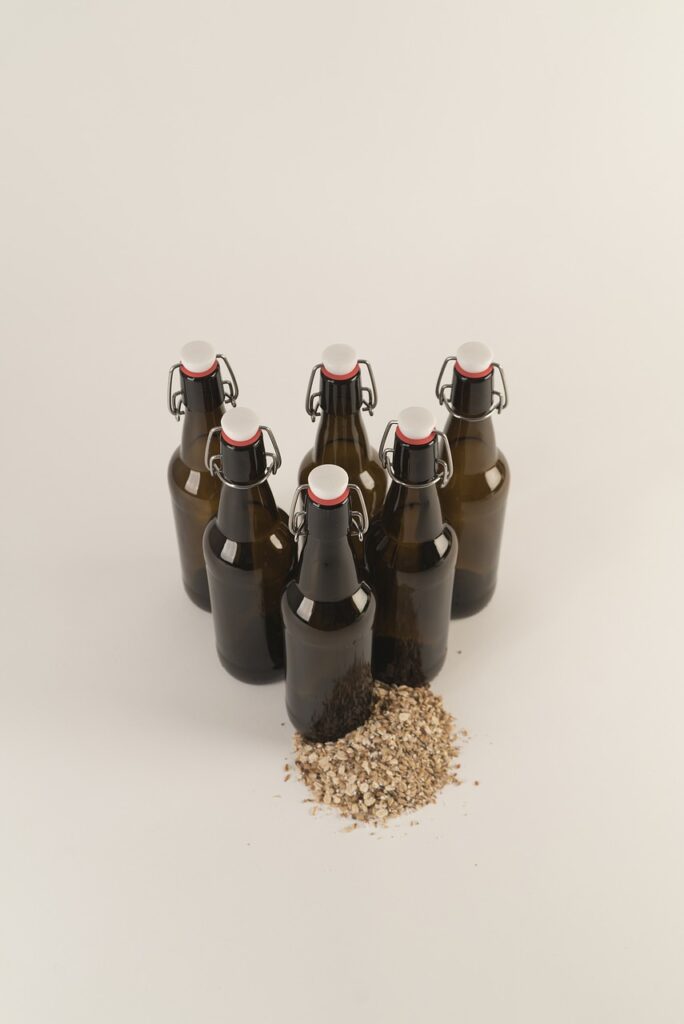If you buy something through a link in our posts, we may get a small share of the sale.
Understanding how long to bottle condition beer should be a top priority for any homebrewer. The process of bottle conditioning is vital to the taste, appearance, and overall quality of your final product. It also allows you to store your beer for extended periods without losing carbonation or flavor.
Contents
How Long to Bottle Condition Beer
In most cases, bottle conditioning takes two to four weeks. This is enough time for the yeast to consume enough sugar to produce the desired amount of carbonation. The yeast’s sugar also contributes to the beer’s flavor, so it’s important not to bottle condition for too long, or else the beer will become flat and flavorless.

However, a few factors can affect the time it takes to bottle condition beer. The type of yeast used, the amount of sugar added, and the temperature of the beer during conditioning all play a role in how long it takes to carbonate. In general, though, two to four weeks is a good rule of thumb.
Things to Do Before Bottle Conditioning
Before you start this process, there are a few things you need to do to ensure the process goes smoothly. After all, you don’t want to mess up your first batch of beer! Here are a few things to keep in mind:
Clean and Sanitize Your Bottles
Cleaning and sanitizing your bottles is crucial to ensuring your beer doesn’t become contaminated. Use a brush to clean the inside of each bottle, and then sanitize them with a sanitizing solution.
Also, ensure the bottles are a better condition. Do not use bottles that have been used for storing other things like pop or juice. If you’re using recycled bottles, inspect them for cracks or chips that could harbor bacteria.
Check the Gravity of Your Beer
Before you start conditioning, it’s important to check the specific gravity of your beer. This will give you an idea of how much sugar is present and how long it will take for the yeast to consume it all.
You can check the gravity with a hydrometer or a refractometer. These devices will tell you the specific gravity of your wort (the unfermented beer) and the final gravity (the fermented beer).
If the gravity is low compared to the day before, it indicates that fermentation is still going on, and more time is needed for the yeast to consume all the sugars. If the gravity increases, fermentation has stopped, and the yeast has flocculated (settled to the bottom of the fermenter).
Add the Priming Sugar
After checking the gravity of your beer, it’s time to add the priming sugar. This sugar will be consumed by the yeast and produce carbon dioxide gas. You can use a few different types of sugar for priming; however, the most common is corn sugar (dextrose).
You can add the priming sugar directly to the bottling bucket or carboy. If you’re using a bottling bucket, stir until it’s dissolved. If you’re using a carboy, you’ll need to rack the beer from the fermenter into the bottling bucket and add sugar.
Factors That Affect Bottle Conditioning
Some factors may affect the conditioning of your beer. If you are having trouble carbonating your beer, here are some factors to consider:

- Yeast Type: The yeast you use can affect how long it takes to bottle condition. A healthy and active yeast colony will ferment the sugars faster than a weak or stressed one. Also, use enough yeast. The rule of thumb is to use one packet (or vial) of liquid yeast per 5 gallons of wort.
- Sugar Amount: The amount of sugar you add can also affect the conditioning time. If you add too much sugar, the yeast will have difficulty fermenting it all and may produce off-flavors. The beer may not carbonate properly if you don’t add enough sugar.
- Temperature: The temperature of your beer during conditioning can also affect the process. An ideal temperature for conditioning is around 68-78 degrees Fahrenheit. If the beer is too cold, the yeast will be less active.
- The type of bottle: Ensure you are using the right bottle. Brown glass bottles are best because they protect the beer from light. Also, ensure the bottles are clean and free from any contaminants.
Frequently Asked Questions
How Long Does It Take for Bottle Conditioned Beer to Carbonate?
It takes 7-10 days for bottle-conditioned beer to carbonate. The warmer the temperature, the faster the beer will carbonate. Also, ensure you are using the right amount of priming sugar.
Does Bottle Conditioning Change Flavor?
Yes, bottle conditioning can change the flavor of your beer if it’s not done properly. If you don’t use enough yeast, the beer will be flat. If you use too much sugar, the beer will be sweet. Also, if the beer is too warm, it may develop off-flavors.
Conclusion
A well-carbonated beer is a delicious beer. If conditioning is done correctly, it will enhance the flavor and aroma of your beer. It will also help to preserve the beer and prevent it from going bad. Check the gravity, add the priming sugar, and use the right type of yeast.

